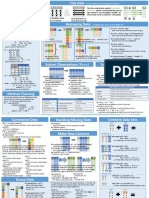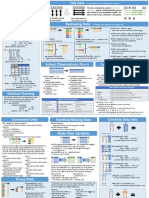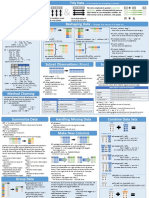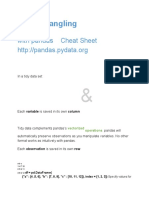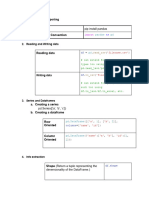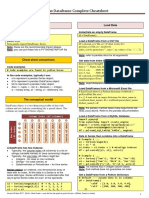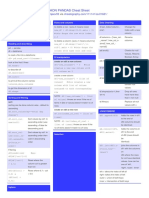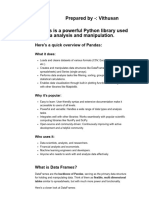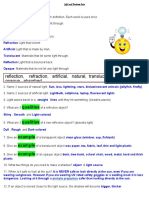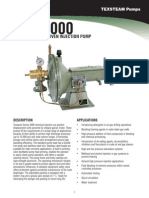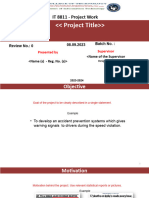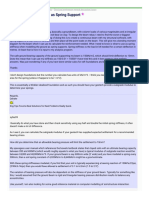0% found this document useful (0 votes)
27 views4 pagesCheat Sheet Pandas
This document is a comprehensive cheat sheet for the Pandas library, covering various functionalities such as importing modules, loading and saving CSV files, converting datatypes, selecting and reshaping data, and performing operations on DataFrames. It includes code snippets and explanations for tasks like selecting rows and columns, adding new columns, renaming columns, and merging DataFrames. The cheat sheet serves as a quick reference for users to efficiently utilize Pandas for data manipulation and analysis.
Uploaded by
brhanegebregnCopyright
© © All Rights Reserved
We take content rights seriously. If you suspect this is your content, claim it here.
Available Formats
Download as PDF, TXT or read online on Scribd
0% found this document useful (0 votes)
27 views4 pagesCheat Sheet Pandas
This document is a comprehensive cheat sheet for the Pandas library, covering various functionalities such as importing modules, loading and saving CSV files, converting datatypes, selecting and reshaping data, and performing operations on DataFrames. It includes code snippets and explanations for tasks like selecting rows and columns, adding new columns, renaming columns, and merging DataFrames. The cheat sheet serves as a quick reference for users to efficiently utilize Pandas for data manipulation and analysis.
Uploaded by
brhanegebregnCopyright
© © All Rights Reserved
We take content rights seriously. If you suspect this is your content, claim it here.
Available Formats
Download as PDF, TXT or read online on Scribd
/ 4

